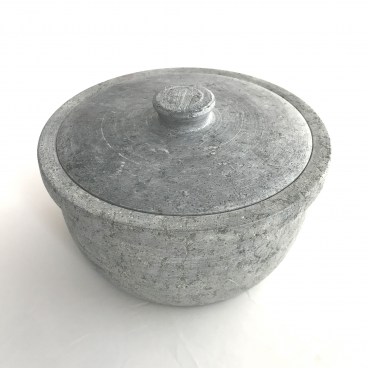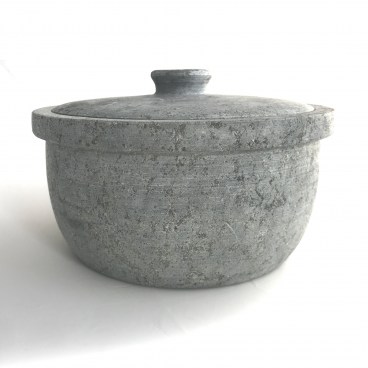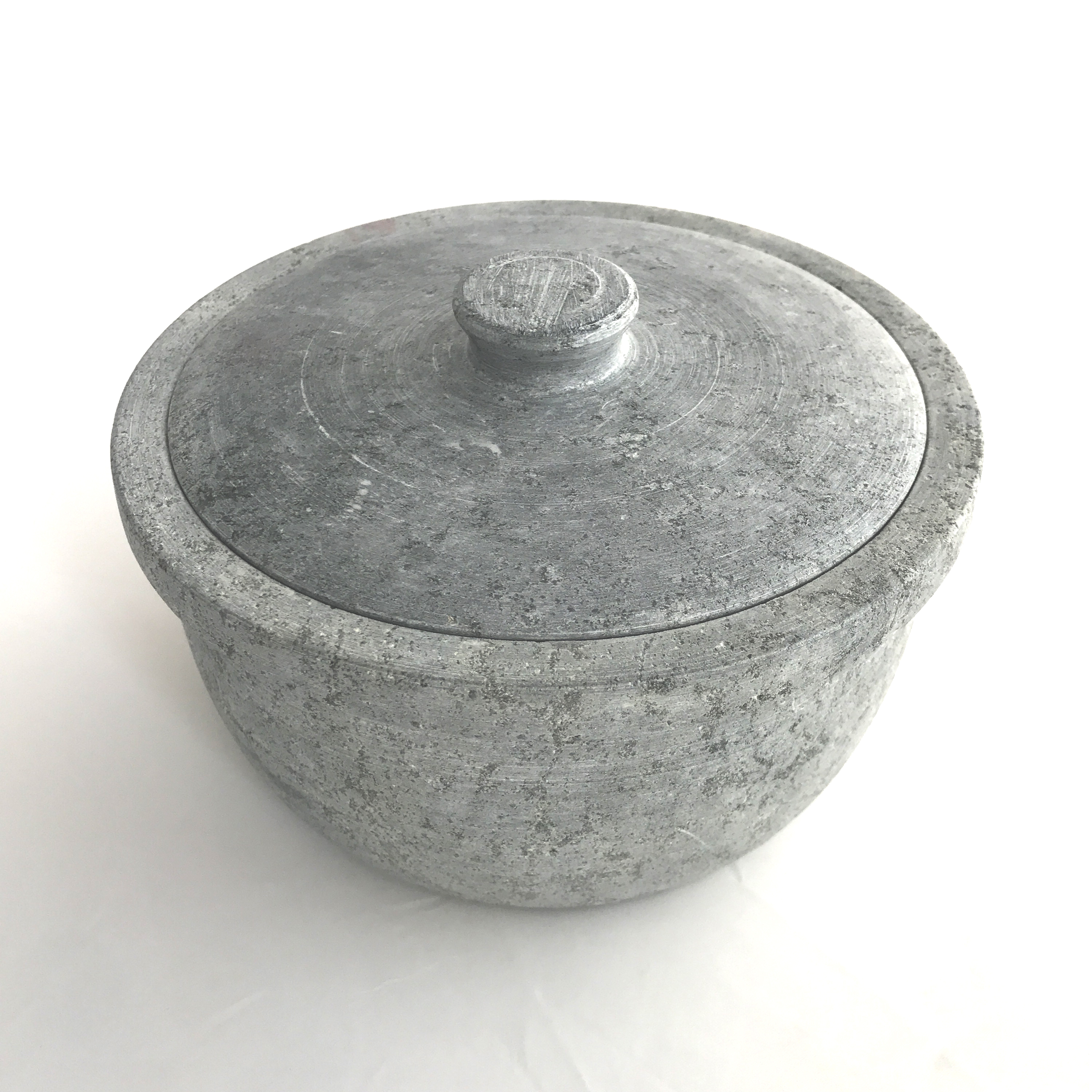In North Tamil Nadu, soapstone has been used for centuries to create carvings and figures, and now, our artisans use the same techniques to create these beautiful cooking implements. Not to be confused with stoneware, which is a kind of clay fired at high temperature, these soapstone pots, or Makal Chatti, are actually handcrafted from a single block of natural, non-toxic soap stone which allows them to withstand high temperatures and keep the food hot for a very long time. The beautiful stone also makes for a stunning and exotic presentation.
This model has a cover and makes a great Chapati Box.
It is very important to properly cure a soapstone following the instructions carefully. If not properly cured, the stone may crack during use. See the tab on curing for instructions and a video.
| |
Large |
| Item Number: |
IND-1050-08 |
| Dimensions (inches): |
|
| Length: |
9.0 |
| Width: |
9.0 |
| Height: |
3.5 |
| Diameter: |
7 |
| Capacity: |
2 qt |
| How we measure |
 |
Appearance
In their natural state, they are light in color, however they need to be cured before its first use which will cause it to turn a darker shade of grey, but still maintain their beautiful stone pattern resembling granite.
Pots can vary in color and hue from each other depending to the exact composition of the minerals in the stone therefore making each piece unique.
As with most handmade products by artisans around the world, the pieces may have slight imperfections in the form or finish of the materials, however, these imperfection do not compromise the aesthetics or functionality of the pieces and are considered normal and to be expected.













